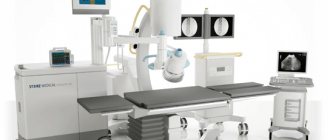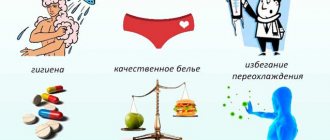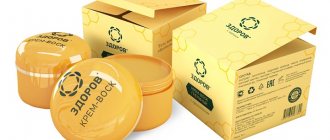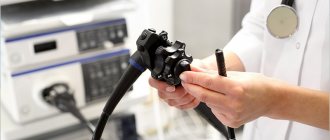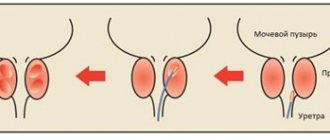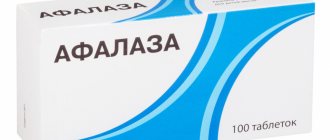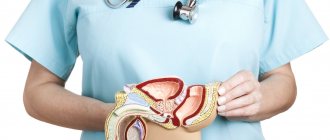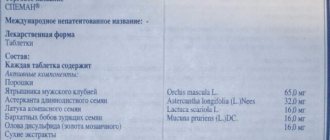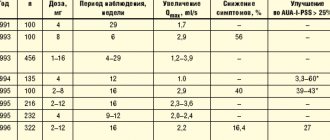Prostate adenoma is a disease that is diagnosed in most men, especially in those who have crossed the age of 50. In addition to the fact that the pathology is accompanied by quite pronounced unpleasant symptoms - pain, difficulty urinating, etc., without proper therapy, prostate adenoma can degenerate into a malignant tumor. Most often, urologists offer surgical treatment of the disease, but for one reason or another, most men are in no hurry to agree to surgery and are looking for ways to cure prostate adenoma without surgery. Reviews of non-surgical therapy vary, however, as a rule, they are quite positive, which gives patients hope.
How to treat prostate adenoma without surgery: choosing a therapeutic method
In order to choose the right treatment for prostate adenoma without surgery or using surgical methods, a highly qualified urologist at the Yusupov Hospital must prescribe the patient a comprehensive examination to determine the following factors:
- degree of prostatic hyperplasia;
- degree of disturbance of the urination process;
- identifying concomitant inflammatory processes in the urinary tract;
- the presence of renal pathologies;
- the presence of diseases of the cardiovascular system, liver diseases.
In addition, when choosing a treatment method for prostate adenoma, the patient’s age is also taken into account.
You need to understand that absolute disposal of prostate adenoma can only be guaranteed by complete removal of the organ. The use of other non-surgical methods can only help to temporarily reduce the symptoms of the disease.
The standard absolute indications for surgery include the following lesions of the urinary tract, which are caused by benign prostatic hyperplasia:
- acute urinary retention;
- repeated massive hematuria;
- renal failure;
- stones in the urinary organs;
- diverticula in the wall of the bladder;
- frequent exacerbations of infection in the urinary tract.
If the pathology is asymptomatic and there is no pronounced narrowing of the urethral canal, it is quite possible to treat prostate adenoma without surgery. Patients may be recommended dynamic monitoring tactics, involving systematic examination and consultation with a urologist.
In addition, the treatment regimen for non-surgical treatment of prostate adenoma includes:
- strict diet;
- mandatory exercises for the pelvic muscles;
- drug therapy;
- the use of bloodless (minimally invasive) techniques using special equipment;
- traditional medicine.
Where to go?
Don’t know where you can quickly, safely and effectively treat prostate adenoma? Contact our clinic! We have all the necessary equipment to diagnose and treat prostate hyperplasia using any of the above methods. The surgical intervention is performed by an experienced urologist, candidate of medical sciences Pshikhachev Akhmed Mukhamedovich, who has more than 15 years of surgical experience and several hundred successfully performed operations. To make an appointment, simply call us at the phone number listed on the website.
Treatment of prostate adenoma without surgery by changing your physical activity regimen
Prostate adenoma is a disease that is diagnosed mainly in men over 50-55 years of age. They are often overweight, do not limit themselves in food, and spend most of their time watching TV or driving a car.
You can stop the growth of prostate adenoma by strictly adhering to the following recommendations regarding increased physical activity:
- there are no special restrictions for physical activity with prostate adenoma, therefore patients of any age are recommended to walk more, ride a bicycle, etc.;
- It is recommended to include in the complex of morning exercises exercises that strengthen the pelvic floor muscles (leg swings, scissors, circular rotations, tension and tightening of the buttocks);
- After waking up in the morning, it is useful to self-massage the perineum using light circular pressure with your finger.
Treating prostate adenoma without surgery by changing your diet
Men with prostate adenoma need to review their daily diet by excluding the following foods and drinks:
- alcoholic drinks, sweet carbonated water;
- fried foods;
- smoked, salty and spicy foods;
- fatty meats;
- strong coffee and tea.
These products contain substances that promote the active growth of glandular tissue of the prostate gland. You can eliminate excess weight, which threatens the development of not only prostate adenoma, but also other, no less serious diseases, using a low-calorie diet with fasting days, which should be commensurate with the body’s capabilities.
A larger amount of liquid from the daily volume should be consumed during the daytime, limiting evening tea drinking.
The diet of men with prostate adenoma should include the following foods and drinks:
- chicken, turkey;
- dishes made from lean meats;
- fresh and stewed vegetables;
- fruits and berries;
- dairy products;
- milk soups and porridges.
Of the heat treatment methods, preference should be given to steamed and baked dishes.
Causes of BPH (prostate adenoma):
It is believed that prostate adenoma is one of the manifestations of male menopause. There is also evidence that chronic infectious untreated prostatitis naturally turns into prostate hyperplasia after 35-45 years. It is likely that BPH is a polyetiological disease, that is, it has many development factors. However, a number of factors have been established with certainty. For the development of adenoma, age and the presence of male sex hormones - androgens, produced in the testicles are required.
Conservative treatment of prostate adenoma without surgery: drugs
Thanks to drug treatment of prostate adenoma, the pathogenetic mechanism of development of the pathological process is affected and the most painful symptoms are eliminated. If the tumor is actively growing, surgical treatment is indicated.
In modern urology, conservative treatment of prostate adenoma is carried out using the following drugs:
- alpha-blockers (Tamsulosin, Omnic, Omnic Okas, etc.);
- 5-alpha reductase inhibitors (Finasteride, Proscar, Dutasteride);
- preparations with herbal substances (Prostamol Uno);
- antibacterial drugs (cephalosporins, Gentamicin);
- probiotics (Bifidumbacterin, etc.);
- immunostimulants (Reaferon, Pyrogenal);
- drugs that improve blood circulation in the prostate (Trental), while simultaneously increasing the local concentration of other drugs.
Drugs from the group of 5-alpha reductase inhibitors help reduce the size of the prostate and reduce mechanical compression of the urethra. The duration of the therapeutic course should be at least six months.
The use of alpha-blocker drugs reduces the muscle tone of the prostatic part of the urethra and the bladder neck, which, in turn, leads to a decrease in internal pressure and a partial reduction in the narrowing of the lumen.
With the help of well-chosen drug therapy for prostate adenoma, it is possible to significantly improve the outflow of urine from the bladder and reduce the volume of residual urine. During treatment, patients’ quality of life improves and their general well-being significantly improves.
Stages and symptoms
The course of the disease can be divided into three main stages, accompanied by various symptoms:
- I – characterized by more frequent imperative urges, nocturia (increased volume of nocturnal diuresis), the first signs of incontinence, and a more sluggish stream. The disease may remain at this stage for several years without developing to a more severe form;
- II – more severe symptoms. The stream of urine may be interrupted, you must often strain to urinate, which often leads to hernias and prolapse of the rectum. After visiting the toilet, there remains a feeling of dissatisfaction and incomplete emptying. The disease develops more actively, the transition to the next form takes relatively little time;
- III – due to the cumulative effect, the bladder stretches, its elasticity decreases, infections develop, kidney stones appear, and incontinence increases. General symptoms of poisoning may also appear - weakness, lack of appetite, nausea, constipation, constant dry mouth.
It is worth understanding that similar symptoms are accompanied by some types of nervous disorders and cancer. An accurate diagnosis can only be made in a clinic after appropriate research has been carried out.
Hormonal treatment of prostate adenoma without surgery
Due to the existence of an endocrine theory of the pathogenesis of prostate adenoma, hormones that prevent the accumulation of dihydrotestosterone are sometimes used in the treatment of the disease.
- antiandrogens;
- estrogens;
- progesterone derivatives.
Estrogen inhibits the enzyme 5-alpha reductase and switches androgen metabolism to the oxidation pathway. In addition, it creates a blockade of alpha-androstenedione, as a result of which hypertrophy and hypersecretion of glandular cells of the prostate parenchyma develop. Complex drug therapy includes taking the drugs 17-hydroxy-19-norprogesterone-capronate, Depostat.
The use of hormonal therapy in the treatment of prostate adenoma is currently disputed by many modern urologists, who justify their use only as part of complex treatment or in the presence of contraindications to surgical intervention.
Dangers
An adenoma is a benign formation, so in itself it does not harm the body. However, as the tissues grow, they block the lumen of the urinary canal, which prevents the passage of urine. This is associated with a number of unpleasant complications and painful sensations, especially in the later stages. The resulting congestion leads to the formation of infections, stones in the bladder, damage to it, as well as serious disturbances in the functioning of the kidneys, including the development of failure. Therefore, at the slightest manifestation of symptoms, you must immediately make an appointment with a urologist, undergo a thorough examination and, based on its results, choose the most effective method of treating prostate adenoma.
Treatment of prostate adenoma without surgery using minimally invasive methods
Minimally invasive methods for treating prostate adenoma are used relatively rarely, since despite their safety, they are less effective than surgery.
Today, treatment of prostate adenoma without surgery can be carried out using the following minimally invasive methods:
- thermal method - the most used of these methods is transurethral microwave thermotherapy. Involves heating the prostate using microwave, radio frequency, and ultrasound radiation;
- cryodestruction method - destruction of altered prostate tissue by cold;
- laser method - through laser exposure, the liquid part of the prostate tissue is heated, after which water evaporates (vaporization) and the surrounding cells shrink;
- balloon dilatation of the urethra - artificial expansion of the lumen of the urethra, into which a catheter equipped with an air balloon is inserted;
- the method of stenting the prostatic urethra - inserting a stent, which is a thin cylindrical frame into the urethra to facilitate the outflow of urine.
The use of the above-described methods of non-surgical treatment of prostate adenoma cannot ensure a complete recovery of the patient, but it guarantees a temporary improvement in well-being and prevention of the development of an inflammatory process in the urinary tract.
For obvious reasons, patients are looking for ways to avoid surgery and how to treat prostate adenoma without surgery. However, the decision on the method of treatment for this pathology should be made only by a urologist who is familiar with the results of the patient’s examination. In some cases, conservative therapy can truly be a salvation, but in others it can only cause harm, since precious time is often lost and the operation has to be performed for emergency reasons.
You can get advice from a competent, experienced urologist, carry out high-quality diagnostics and effective treatment of prostate adenoma at the Yusupov Hospital. This is a multidisciplinary medical center equipped with the latest diagnostic equipment, which, coupled with the high competence of our diagnosticians, guarantees accurate research results. For each patient, the clinic’s urologists select the most effective individual treatment regimen using modern medications or innovative minimally invasive techniques.
Surgery
Surgical operations are currently considered the “gold standard” and the most effective treatment for prostate adenoma. With their help, you can achieve complete removal of prostate adenoma with minimal consequences for the body, maintaining normal urination and erection. Their main advantage is the possibility of use at any stage of the disease. Our clinic practices several main types of surgical interventions. The decision on how to treat prostate adenoma is made by the attending physician together with the patient after a thorough examination and examination.
Open adenomectomy
Open adenomectomy is a classic operation that involves making an incision in the perineum or lower abdomen and removing inflamed gland tissue using various instruments. The main advantage of the method is that it is well studied and there is no need for special equipment, so it can be used in almost any clinic. However, due to the open nature of the operation, it is often accompanied by extensive bleeding. In addition, due to the close location of the prostate to the nerve nodes, there is always a risk of damage to them, leading to disruption of sexual and urinary functions.
Transurethral resection
TUR of prostate adenoma is a procedure to remove part of the prostate gland using an electroresection loop. Today it is one of the most preferred and frequently performed operations due to its low invasiveness. All instruments are brought to the formation through the urethral canal without any incisions, as a result of which there is no blood loss, there are no scars on the skin, and the recovery period is only a few days. In addition, during the procedure, complete information about the state of the urinary system is collected and any abnormalities found are eliminated.
New in the treatment of prostate adenoma
Minimally invasive methods using advanced technologies and equipment are considered the most promising. These include:
- Holmium laser enucleation of prostate hyperplasia (HoLEP) - the operation is performed through small (up to 2 cm) incisions. Using a laparoscope, a laser fiber is inserted into the bladder and through its neck to the gland. The adenomatous tissue is removed using careful incisions made with an ultra-precise and safe holmium crystal laser, after which it is morcellated. This approach guarantees almost complete absence of damage to healthy tissue and minimal blood loss;
- transurethral photoselective vaporization - the method consists in completely burning out damaged tissues using focused laser radiation without damaging healthy cells. The intervention is performed through the urethral canal, which eliminates any incisions and scars, allows for a minimum number of relapses, and reduces recovery time to several days;
- robot-assisted laparoscopy - performed using the advanced Da Vinci robotic complex, equipped with the necessary tools and equipment for video recording. The control is performed by an experienced surgeon at a special terminal, and the image from the camera is displayed on a large monitor in high resolution, which significantly expands the surgical field. Special robot algorithms smooth out all sudden and random movements of the operator, completely eliminating the human factor such as tremor. Using the complex allows you to perform the operation as accurately and accurately as possible, through small incisions of a few millimeters.
All these methods have a significant disadvantage - expensive equipment and the need for experienced, qualified personnel to work with it. Therefore, such techniques cannot be used in every hospital.
